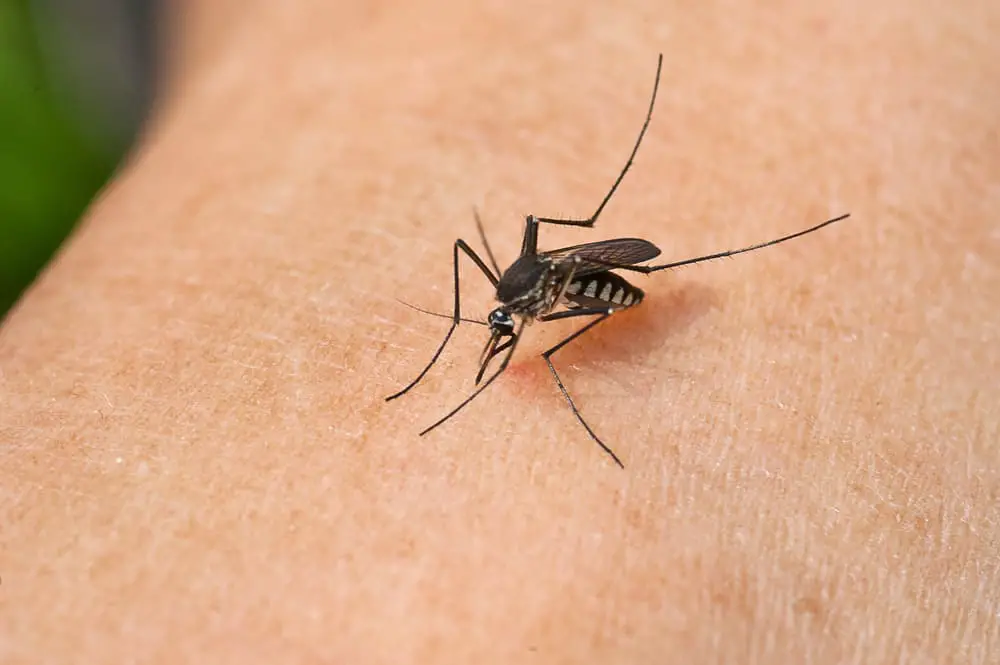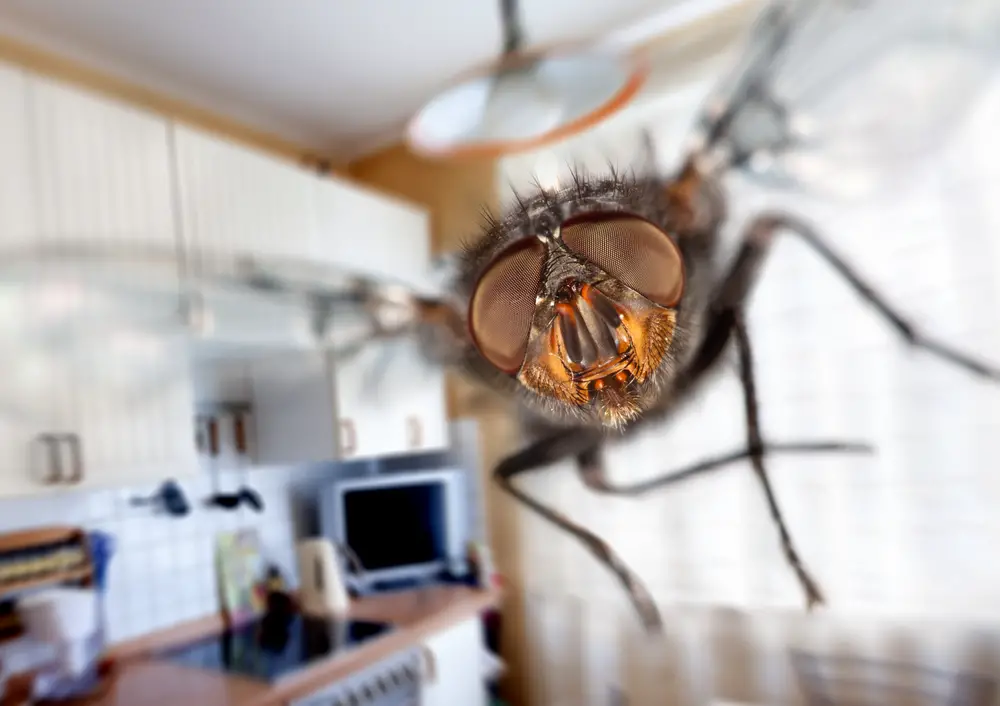Have you ever been enjoying a lovely day outdoors, only to have it disrupted by an eager bug buzzing persistently in your face?
This seemingly relentless behavior of insects can feel like a personal attack, but in reality, it has more to do with their survival instincts and the way they perceive the world around them.
Quick Answer:
Bugs may fly in your face due to various reasons. They can be attracted to the carbon dioxide you exhale, bright colors, scents, or movements. Some bugs swarm or seek moisture and nutrients, while others exhibit territorial or defensive behaviors. The reasons for bugs flying in your face can be a combination of their instincts, environmental factors, and chance encounters.
Understanding the reasons behind this seemingly annoying behavior can help us approach the situation with empathy and find helpful solutions.
Simple actions, such as using repellent or staying away from brightly colored clothing, can reduce the chances of a bug encounter and allow us to enjoy the great outdoors in peace.
Bug Flight Behavior
Insects are a diverse group of creatures, with many flying species utilizing their wings to carry out various tasks. Flying provides numerous advantages, such as escaping predators, searching for food, and locating potential mates.
It often leads to a fascinating world of aerial behavior, which many entomologists are keen to observe and understand.
One reason for insects flying toward our faces is that they are attracted to the carbon dioxide (CO2) released from our breath. This is especially true for mosquitoes, who use CO2 as a cue to locate their human prey for a blood meal. Other flying insects, like flies, may be attracted to the heat and moisture emitted from our bodies.
In the pursuit of mating opportunities, some insects may also inadvertently fly toward us. Certain species are drawn to bright colors and patterns, which might be present on our clothing or accessories.
They may perceive these visual cues as potential mates or rivals, leading them to approach humans. Similarly, pheromones released by insects can occasionally cause confusion if they detect them on our person, enticing them even closer to our faces.
Another aspect of bug flight behavior that entices them towards humans is the pursuit of a resting place. At times, we inadvertently provide the perfect landing spot for tired insects.
Our body heat creates an appealing surface for them to recuperate, and our motionless state (like when we are sitting or standing still) makes us resemble a stable structure.
Attraction Factors
Carbon Dioxide and Breath
Bugs particularly flies and mosquitoes, are attracted to the carbon dioxide (CO2) we exhale. As we breathe out, a plume of CO2 forms around our faces, drawing them in.
This is why flying insects often buzz around our mouths, nose, and ears. Additionally, the moisture in our breath can attract certain bugs, adding to their interest in our faces.
Smells and Scent
There are numerous smells on our bodies that can attract insects. Our skin produces various scents, such as sweat, body odor, and natural oils, enticing bugs to land and investigate.
Moreover, external factors like perfume, shampoo, and hair products can intensify these smells, making our face and head even more alluring to insects.
Skin and Body Heat
Insects, especially mosquitoes, are sensitive to temperature cues and can detect the heat emitted by our skin. Our face, being one of the most exposed parts of our body, often has a higher surface temperature, making it an inviting spot for bugs to explore.
Furthermore, certain insects may be drawn to the warmth of our body for the beneficial heat it provides them.
Food Sources
Many insects rely on humans for sustenance. Our skin, hair, and ears can be potential sources of nourishment for small bugs. Some insects, like mosquitoes, see us as a food source due to our blood, which they require for reproduction.
So, when it comes to nutrition, our face becomes a convenient target for many flying creatures.
Common Pests and their Targets
Fruit Flies and Gnats
Fruit flies, and gnats are small, pesky insects that are attracted to fermenting fruit, vegetables, and standing water. They tend to buzz around our faces, specifically targeting our eyes, nose, and mouth.
The reason for this behavior is their attraction to certain substances, such as lacrimal secretions or our breath. These little bugs may accidentally land on our faces, hands, or even our hat due to their poor flying skills.
Mosquitoes

Mosquitoes are infamous for their bites, which can leave red, itchy marks on our skin. They are attracted to the CO2 in our breath, as well as body heat and certain chemicals in our sweat.
Mosquitoes often fly near our faces and have a knack for targeting sensitive areas like our eyes, forehead, and nose. Wearing a hat may help prevent them from reaching these areas easily.
House Flies
House flies are a common nuisance that are drawn to our homes by food sources such as pet food bowls, dirty dishes, and garbage. They tend to buzz around our faces in search of moisture and may land on our eyes, nose, or hands.
While house flies aren’t biting insects, they can carry bacteria and potentially transfer it to our faces, increasing the risk of conjunctivitis and other infections. Crane flies, which look similar to large mosquitoes, may also be found indoors but are generally harmless and do not bite.
Overall, the various common pests that fly around our faces are attracted to specific substances and conditions, such as moisture, CO2, and food sources. To minimize their presence, it’s essential to maintain cleanliness, avoid leaving food exposed, and remove standing water where possible.
Disease and Infection Risk
Bugs flying in your face can be more than just annoying. In some cases, they may pose a risk of spreading diseases and infections. When bugs like mosquitoes and flies come into contact with your face, there’s a chance they could transfer pathogens to your skin, eyes, or other vulnerable areas.
Bites and Disease Transmission: When bugs bite, they might cause pain and swelling. There’s also a risk of transferring diseases. For example, a mosquito bite has the potential to transmit serious illnesses such as malaria, Zika virus, and West Nile virus.
Infection through Eye Contact: Pink eye, also known as conjunctivitis, can sometimes be caused by pathogens transmitted by insects. When a bug carrying bacteria or viruses lands near your eye, there’s a chance that these pathogens could enter and cause an infection.
Flies and Bacteria Transmission: Houseflies are known to carry various types of bacteria, such as Salmonella and E. coli. If a fly lands on your face, the bacteria could potentially be transferred to your skin or mouth, which may lead to an increased risk of infection.
It’s essential to take certain preventative measures to protect yourself from these risks.
- Use insect repellent when spending time outdoors.
- Install window screens to prevent bugs from entering your home.
- Wear protective clothing, such as long sleeves and pants, in areas with a high number of biting insects.
- Minimize outdoor activities at dawn and dusk when mosquitoes are most active.
Pest Control and Prevention
Home Methods
To keep bugs away from your face indoors, maintain a clean and tidy home environment. Pay special attention to the kitchen and trash areas, as these can attract various pests.
Dispose of trash regularly, and keep trash cans tightly sealed. A simple home remedy for getting rid of bugs includes using apple cider vinegar and a few drops of dish soap in a small container to trap bugs.
Good hygiene routines can also help, as bugs are often attracted to fruity scents and skin-care products. Choose fragrance-free personal care items when possible, and avoid wearing strong perfumes or colognes.
Garden and Yard Care
Maintaining a well-kept garden and yard can deter bugs from entering your home. Eliminate standing water from your property, as it serves as a breeding ground for mosquitoes. Empty bird baths, plant saucers, and other containers holding stagnant water.
Take care of trash and compost heaps to make them less inviting for pests. Trim back overgrown vegetation and clear away fallen leaves and debris. Also, limit the amount of fungus in your garden as it can attract fungus gnats. Keeping your vegetables separated from other plants can prevent cross-contamination.
Professional Solutions
If you are facing persistent pest issues, consider hiring a reputable pest control company like Orkin. A professional exterminator can assess your home situation and provide tailored solutions to control and prevent bugs around your living space.
A professional pest control company can offer valuable advice and solutions for managing specific pest problems. They can also provide a range of treatments and products that can effectively control and prevent pest infestations.


